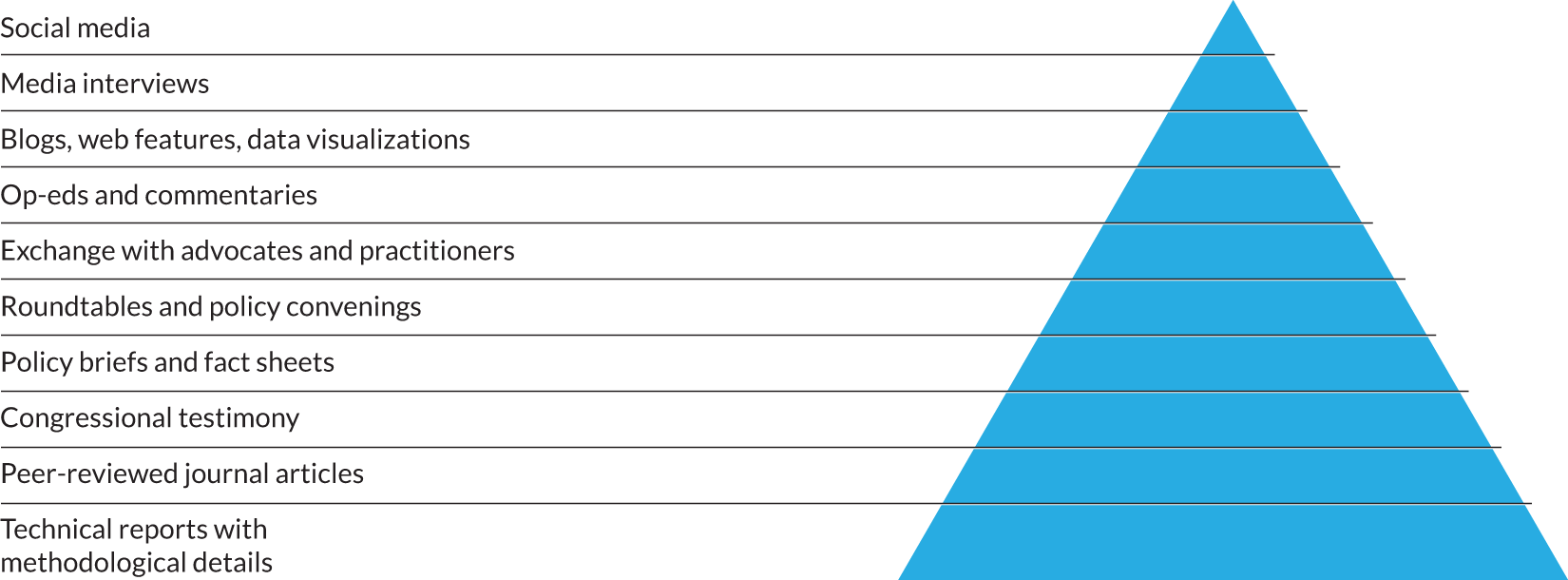chapter twoDeveloping an Audience Outreach Strategy
Amy Elsbree and Amy Peake

The first step in developing a communication strategy for your work is to identify your audience. Depending on your goals, your target audience can range from a handful of academic experts to policymakers to interested members of the public. The most successful outreach campaigns are deliberate about who they are trying to reach and how they will reach them.
Communicating directly with your audience and other stakeholders can help get your work in the right hands and elevate your profile. You may not be seeking fame and fortune, but raising your profile can help you connect with new colleagues, new research opportunities, new funders, and new data sources. By effectively identifying and purposefully communicating with the most relevant groups, you help ensure that the right people can see and know how to act on your research, going beyond hoping they happen to catch the mention of the research in the news or glance at social media at the right time. Ultimately, this method of communication—purposeful, direct personal outreach—helps strengthen your relationships so you and your audiences can help influence policy and effect change.
Later chapters dive into tactics for using communications platforms that can help you reach your audience through media relations, social media, blogging, data visualizations, ...
Get Elevate the Debate now with the O’Reilly learning platform.
O’Reilly members experience books, live events, courses curated by job role, and more from O’Reilly and nearly 200 top publishers.

